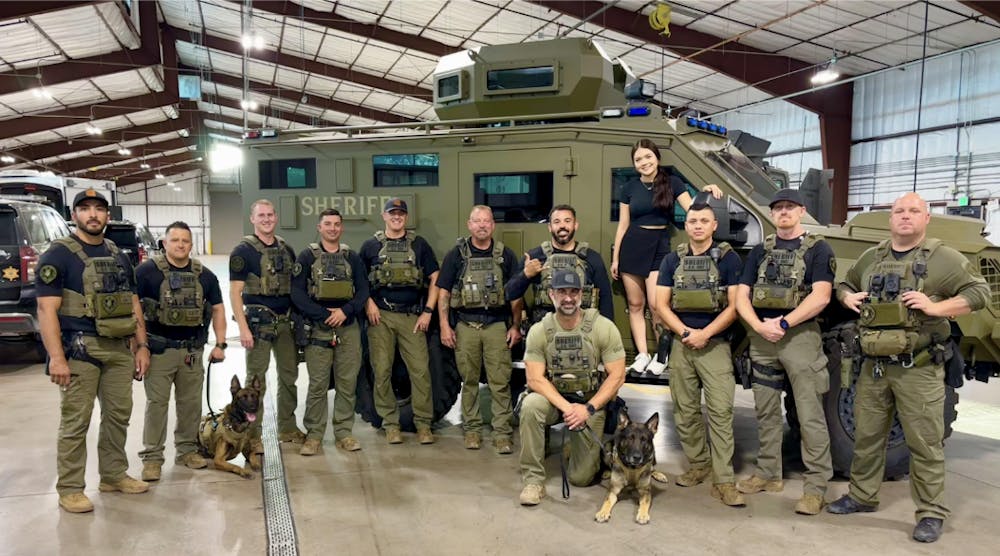PHOENIX- In the world of law enforcement, there exists a unique division that is filled with the most loyal and brave workers who put the safety and well-being of others before themselves. Driven by a profound sense of duty, they devote their lives to their job. A job that they did not choose but one they carry out strictly for the safety of the communities. They serve with no expectation of rewards, honors or even a belly rub or a treat. This is the K-9 unit.
“Technology in our world continues to change and improve which in turn changes policing, yet there is no technology which can replace the capabilities of a police dog,” Michael R Massey, a K-9 handler for the Tactical Support Bureau and Narcotics Trainer for Phoenix police said.
Working alongside their handlers, K-9s in law enforcement spend the majority of their lifetimes serving their state by responding to emergencies that involve them putting their training to the test. They live up to the standards they are required to meet, with the help of their handlers who are as dedicated to them as they are to their handler.
From as young as nine months to as old as 18 months, K-9s are put through training and are taught the duties of the services that they will be responsible for until their retirement. Their tactical training consists of detecting narcotics, patrolling and apprehending suspects, identifying explosives, bite work training and protection, all while also learning verbal cues from their handlers.
Though German Shepherds are often seen as typical police dogs in movies, Belgian Malinois are more commonly used in the field. These Belgian Malinois are brought to the K-9 units by the vendors contacted by each law enforcement division. Belgian Malinois have a better strive for work compared to other dogs and have the ideal genetics for a K-9 unit. These dogs are brought in from overseas, including countries such as the Netherlands, Hungary, Czechoslovakia and many others.
The vendors do initial training with the dogs to determine their willingness to hunt and adapt to various environments, categorizing them as “green dogs”. The K-9 unit selects the dogs needed and puts them through another round of tests to decide which dogs are the best fit for their unit.
“Say we pick two of those five, which were picked out of 100 oversea dogs, we might still wash out 20% of what we bring in through our basic academy for the dog,” Jason Jambor, a K-9 trainer and handler from the K-9 SWAT Division for Maricopa County said.
There are various requirements that have to be met to become a K-9 handler, including having 2-3 years of experience as an officer. The testing process is strict and consists of a physical fitness test, an oral test and a scenario-based test to analyze the decision making skills of each officer. Background checks are also enforced to ensure the officer has what it takes to become a K-9 handler.
“It’s a challenging job and you have to make sure you have the right headspace to be able to come and start taking over something like this,” Danny Durand, a K-9 trainer and handler from the K-9 SWAT Division for Maricopa County said.
The K-9 and their handler are together 24/7, allowing them to form a bond built on mutual trust. The calls they answer and every stressful moment they encounter are experienced together, creating lasting imprints on their hearts. Officer Jambor shared a heartfelt story about the first K-9 who left an imprint on him. His name was Striker. Jambor compared him to a gun because of how strong and hard Striker was. He explained that he was not very affectionate and not the nicest, but when it came to doing his job, Striker was good at what he was trained to do.
“As hard as it was to take care of him and do all the things with him, losing him was like losing a little piece of myself,” Jambor said. .
When finding a suspect, drugs, a bomb or tracking a lost person when they succeed, the K-9 and their handler earn the satisfaction of doing the duty they are sworn to uphold.
“Every time my K-9 partner locates a suspect who is hiding or apprehends a suspect who is causing a safety risk to officers or the public, I take pride in knowing Usi [his K-9] and I make my fellow officers and the public safer,” Massey said.

